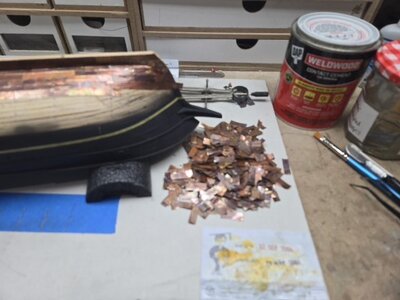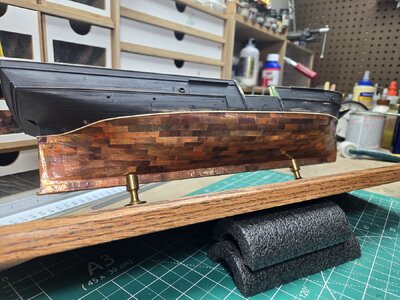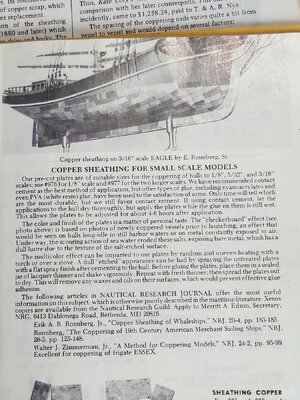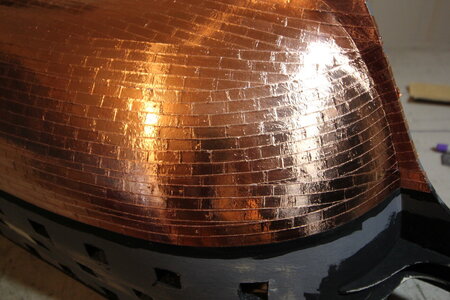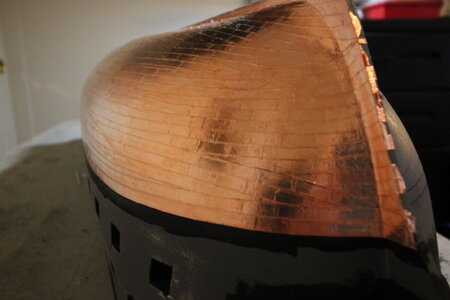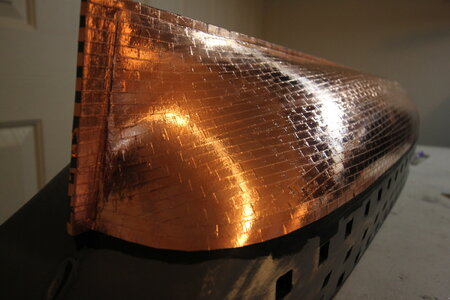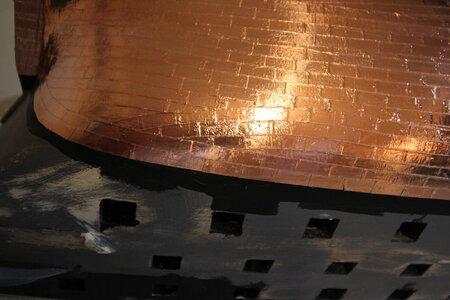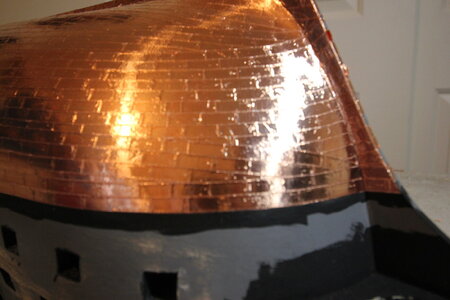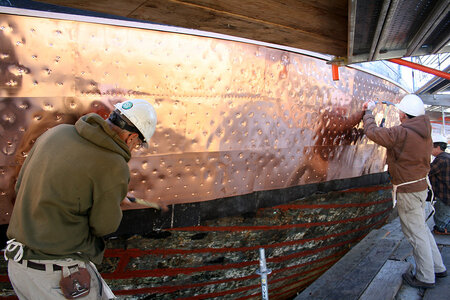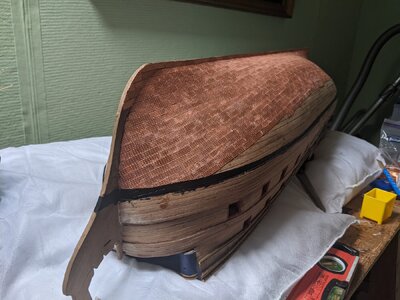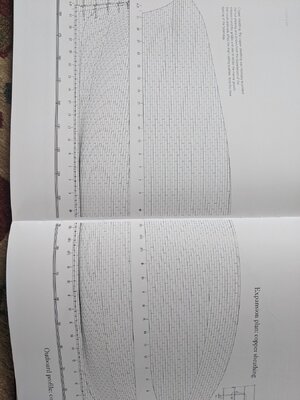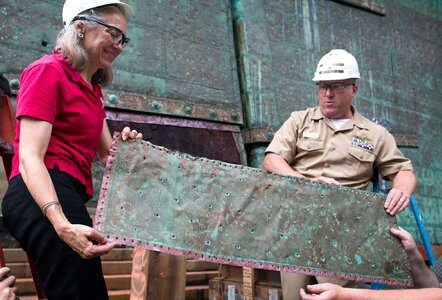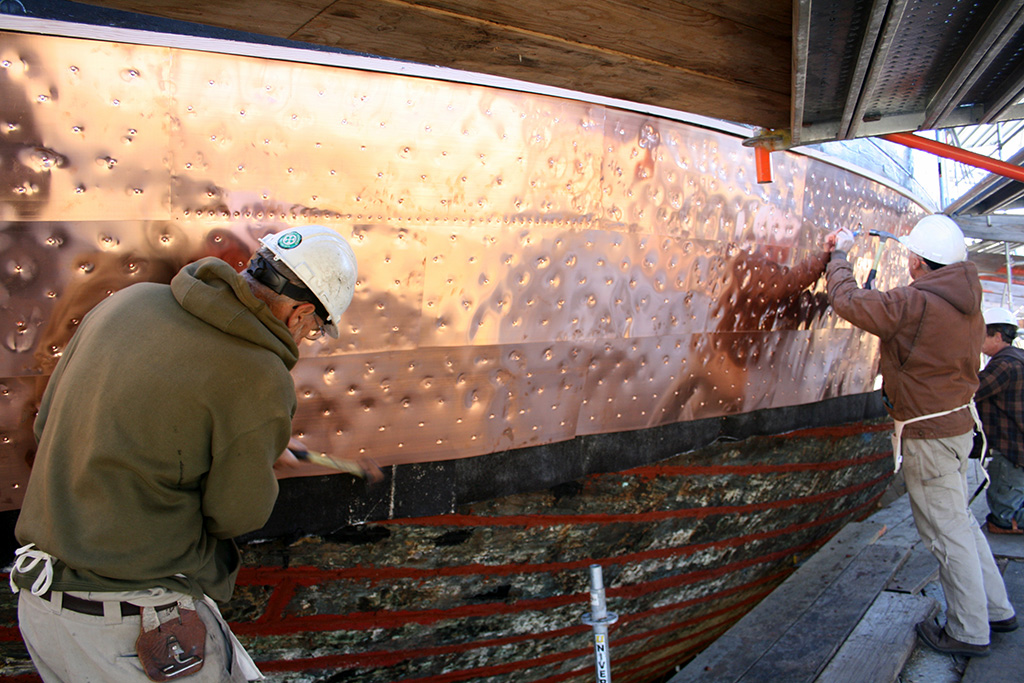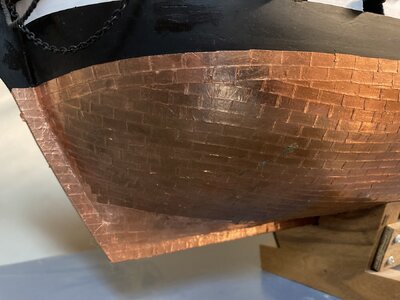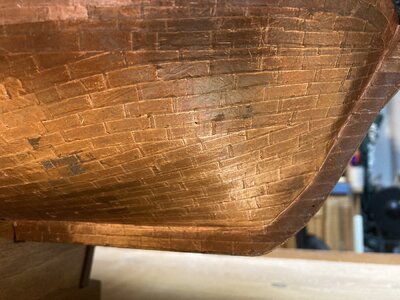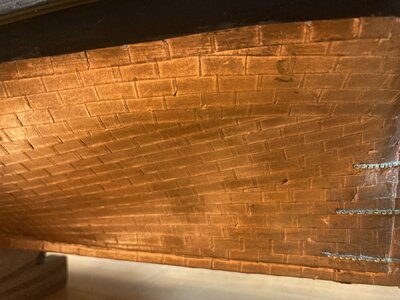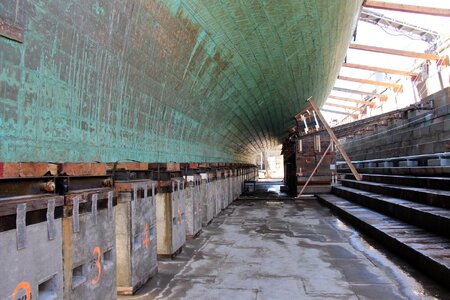I am restoring an old barquentine model and the owner would like the bottom copper plated. I have never done copper plating before so I have some questions.
1. How difficult is it?
2. I know I should start from the stern and bottom. Should I overlap the plates or just butt them together?
3. Which is better, copper tape or pre-made plates?
4. What is the best glue to use?
5 lastly about the cut off line, should I do it half way up and then copper from the water line down of just go right up to the waterline, trim the ends and put a row of straight plates along the waterline?
1. How difficult is it?
2. I know I should start from the stern and bottom. Should I overlap the plates or just butt them together?
3. Which is better, copper tape or pre-made plates?
4. What is the best glue to use?
5 lastly about the cut off line, should I do it half way up and then copper from the water line down of just go right up to the waterline, trim the ends and put a row of straight plates along the waterline?





